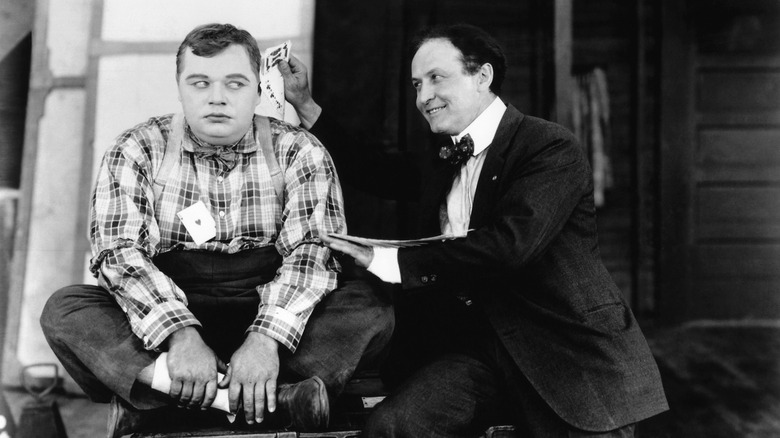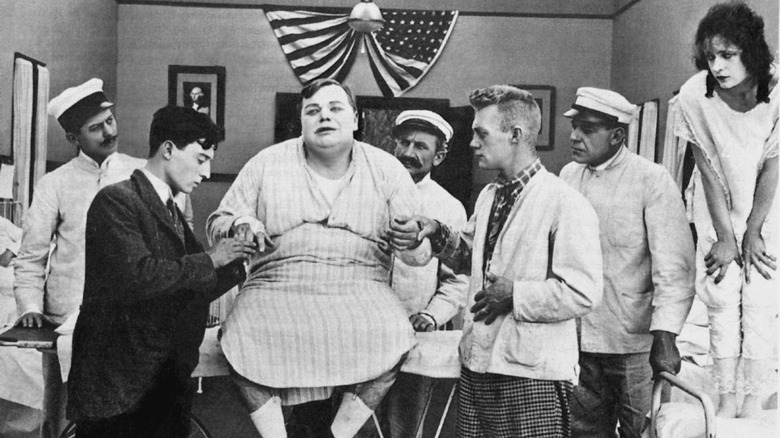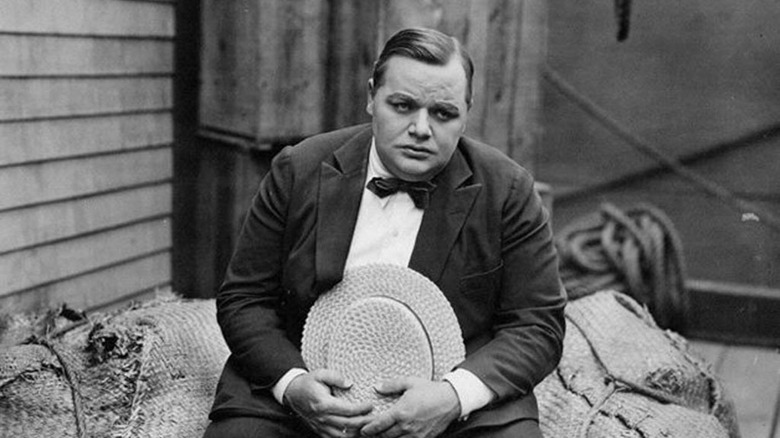The Other Silent Movie Star That Took Buster Keaton Under His Wing
Some stars from the silent film era have since become household names, while others have been neglected by history. One comic time has forgotten is Roscoe "Fatty" Arbuckle, who was hugely famous in the early days of Hollywood. Sadly, a major scandal cut his career short all too soon. Before leaving the public eye, he had the pleasure of introducing Buster Keaton to his lifelong friend: a movie camera.
Arbuckle began his career in the early days of cinema in two-reel comedies, short films that ran for about half an hour. He was a member of the Keystone Cops and appeared in the film series produced by Mack Sennett. Movies were an entirely new medium and films with sound, or "talkies," had not yet come into the picture. This restriction made physical comedy all the rage, and Arbuckle was a master of cartoonish fumbling.
After his career was jump-started by the comedy troupe, Fatty began directing and starring in his own two-reels. He had a growing fanbase, and his name was written into his film titles to draw them. At first, his work was produced by Sennett at Keystone Pictures, but he later began working with Joe Skank at Paramount. Arbuckle would later introduce Skank to Keaton, igniting a turbulent working relationship that would last for many years to come.
Keaton was a natural on camera
Keaton first met Arbuckle when Stone Face was down on his luck. He was looking for a way to support his family when he ran into an old friend on the street. His friend was accompanied by Arbuckle, and the two were introduced. "Arbuckle says, have you ever been in a motion picture?" Keaton recalled to BBC (via Buster Keaton). "I told him, I said, I've never even been in a studio. Well, he said, come on down, try a bit with me, and see how you like it."
The rest was history. Keaton liked "everything about the studio," from the camera to the editing room. What's more, he was a natural in front of the camera. The Great Stone Face had a background in vaudeville performance, and physical comedy was second nature to him. "[Arbuckle] only had to turn me loose in the set and I'd have material in two minutes — because I'd been doing it all my life," Keaton explained in A Hard Act to Follow.
His first ever onscreen appearance was in Arbuckle's 1917 two-reeler, "The Butcher Boy." Keaton walks into Arbuckle's shop and asks him to fill a bucket of molasses but leaves his money at the bottom of the bucket. Trying to retrieve the money, Arbuckle scoops out the molasses into Keaton's hat, then back into the bucket without him noticing. Keaton unwittingly puts his hat back on and tries to tip it at Arbuckle, only to realize it's stuck to his head. For the first time, Keaton totally captivated the audience. He would go on to sign a deal with Arbuckle's producer at Paramount.
So, what happened to Fatty Arbuckle?
Sadly, Arbuckle did not get to share in his friend's success for long. Just a few short years after introducing Keaton to the world of moviemaking, Arbuckle was accused of sexually assaulting a young actress, resulting in injuries that caused her untimely death. He was making a salary of one million dollars per year at Paramount, a totally inconceivable figure in 1921, and evidence suggests that this accusation was an attempt at blackmail for financial gain.
Fatty was acquitted in 1922. The jury released an apologetic statement, lamenting that a "great injustice has been done to him" and pleading to the American public for his forgiveness (via Smithsonian). Unfortunately, the industry was not so quick to embrace him. Arbuckle was banned from appearing in films for the subsequent year, and his public image was tanked. His career would never recover before he passed away just over a decade later.
He may not have had the acclaim he deserved during his lifetime, but Arbuckle's influence lives on. He was a staple of silent film, and he directly introduced one of its biggest stars to the silver screen. When we remember Keaton, we remember Arbuckle too, and his memory persists.


